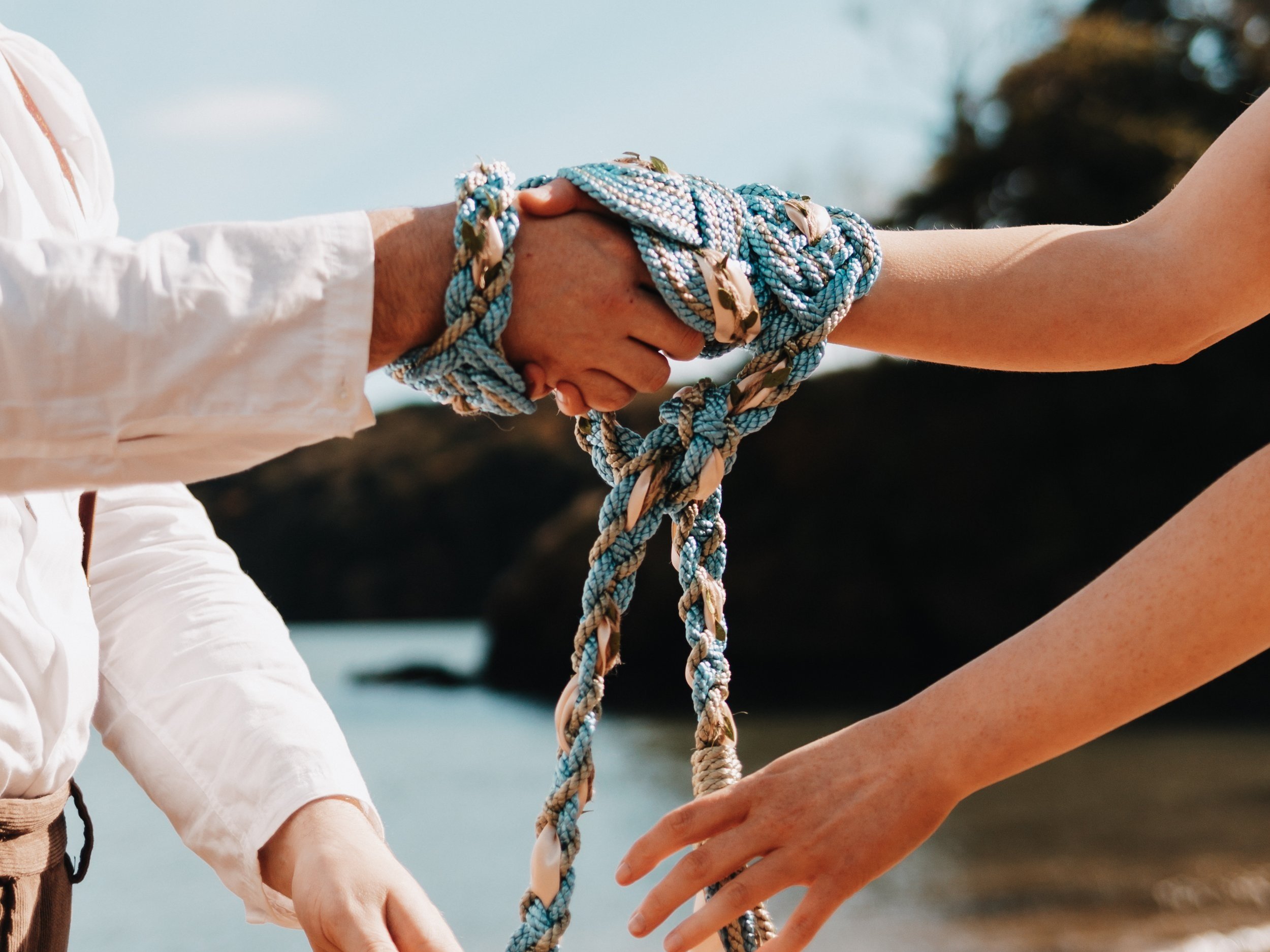Is Handfasting Pagan?
Handfasting is an ancient ritual with deep roots in many cultures, but it is often associated with Paganism due to its strong connection to nature, symbolism, and spiritual practices. While handfasting has Pagan origins, its meaning and significance have evolved over time, making it a versatile and inclusive ceremony for modern couples of all beliefs.
The Pagan Origins of Handfasting
Handfasting dates back to ancient Celtic and Norse cultures, where it was originally a Pagan ritual. In these societies, handfasting was often used as a betrothal or pre-wedding ceremony, symbolising the union of two individuals. The couple’s hands were bound together with a cord or ribbon to represent their connection and commitment to one another.
In Pagan traditions, nature and the elements were highly revered, and handfasting ceremonies often took place outdoors, incorporating the natural world as a witness to the vows. Many Pagans believed that the union was not only a bond between two people but also a connection to the earth, the seasons, and the spiritual forces that governed life.
The Evolution of Handfasting
While handfasting has its roots in Paganism, it was not exclusive to Pagan cultures. In medieval Scotland, handfasting was also used as a form of trial marriage, where couples would live together for a year and a day to test their compatibility before making a permanent commitment. This practice eventually spread throughout Europe and evolved into a recognized form of marriage ceremony.
As Christianity spread, the Church began to adopt certain aspects of handfasting, blending it with Christian wedding traditions. Over time, handfasting became less associated with Paganism and more widely accepted as a symbolic act of union across different belief systems.
Modern Handfasting: Inclusive and Versatile
Today, handfasting is a popular choice for couples who want a meaningful, symbolic ceremony, regardless of their religious or spiritual beliefs. While it remains an important ritual for many Pagans, it is also embraced by couples of various faiths, including Christians, Wiccans, and those who identify as spiritual but not religious.
Handfasting allows couples to personalise their ceremony in a way that reflects their values and relationship. Some may choose to include elements from Pagan traditions, such as invoking the elements (earth, air, fire, and water) or conducting the ceremony outdoors. Others may focus on the symbolism of the cord itself, which represents the strength and unity of their bond.
Is Handfasting Only for Pagans?
No, handfasting is not exclusively Pagan. While it has Pagan origins, the ritual is now used by couples from all walks of life. It offers a flexible and symbolic way to celebrate love, making it suitable for those who want a more meaningful and personalized ceremony.
Whether you're drawn to the Pagan roots of handfasting or simply love the symbolism of "tying the knot," this ceremony can be adapted to fit your unique beliefs and traditions. From incorporating religious blessings to personalising the cord with meaningful materials, handfasting allows couples to create a ceremony that speaks to their love story.
Conclusion: Handfasting as a Symbol of Unity
While handfasting may have started as a Pagan ritual, it has grown into a universal symbol of love and unity that transcends religious boundaries. Whether you identify with Pagan traditions or are simply looking for a meaningful way to celebrate your bond, handfasting is a beautiful and versatile choice. At Anamchara Cords, we create bespoke handfasting cords that reflect the uniqueness of your relationship, allowing you to tie the knot in a way that is deeply personal and symbolic.
Explore our collection of handcrafted cords and start creating your own handfasting tradition today.




